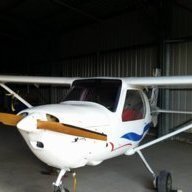-
Posts
871 -
Joined
-
Last visited
-
Days Won
4

Nightmare replied to ZeroAlpha's topic in Aircraft Incidents and Accidents

Nightmare replied to ZeroAlpha's topic in Aircraft Incidents and Accidents

Nightmare replied to ZeroAlpha's topic in Aircraft Incidents and Accidents

Nightmare replied to ZeroAlpha's topic in Aircraft Incidents and Accidents

Nightmare replied to Narrabeenrick's topic in Student Pilot & Further Learning

Nightmare replied to Narrabeenrick's topic in Student Pilot & Further Learning

Nightmare replied to Narrabeenrick's topic in Student Pilot & Further Learning

Nightmare replied to Narrabeenrick's topic in Student Pilot & Further Learning

